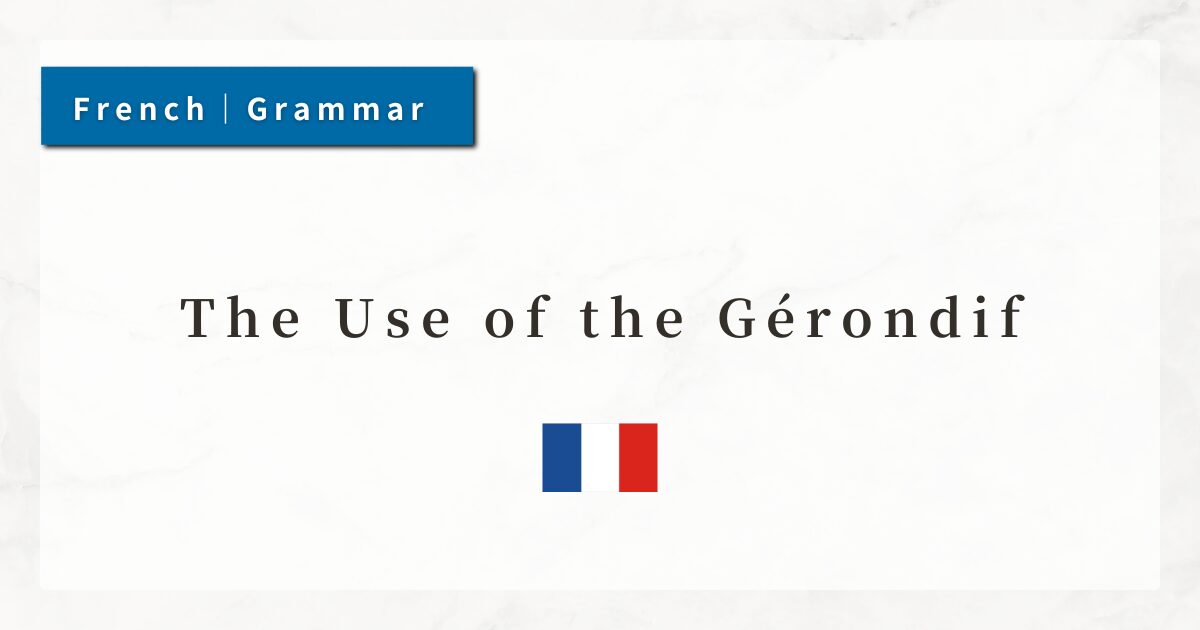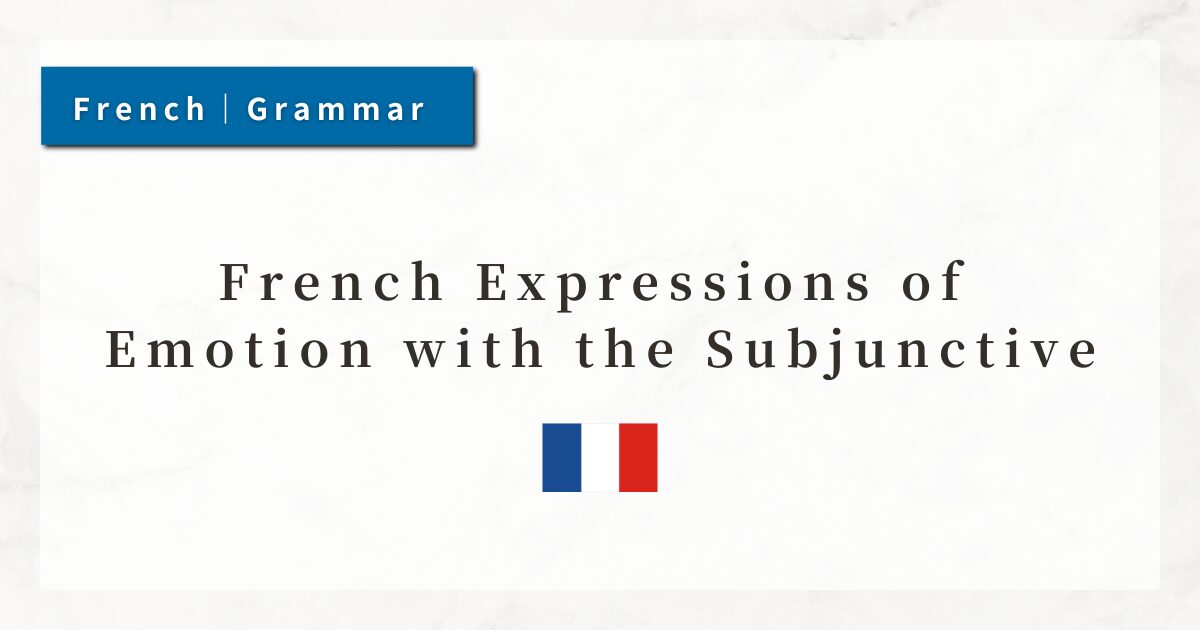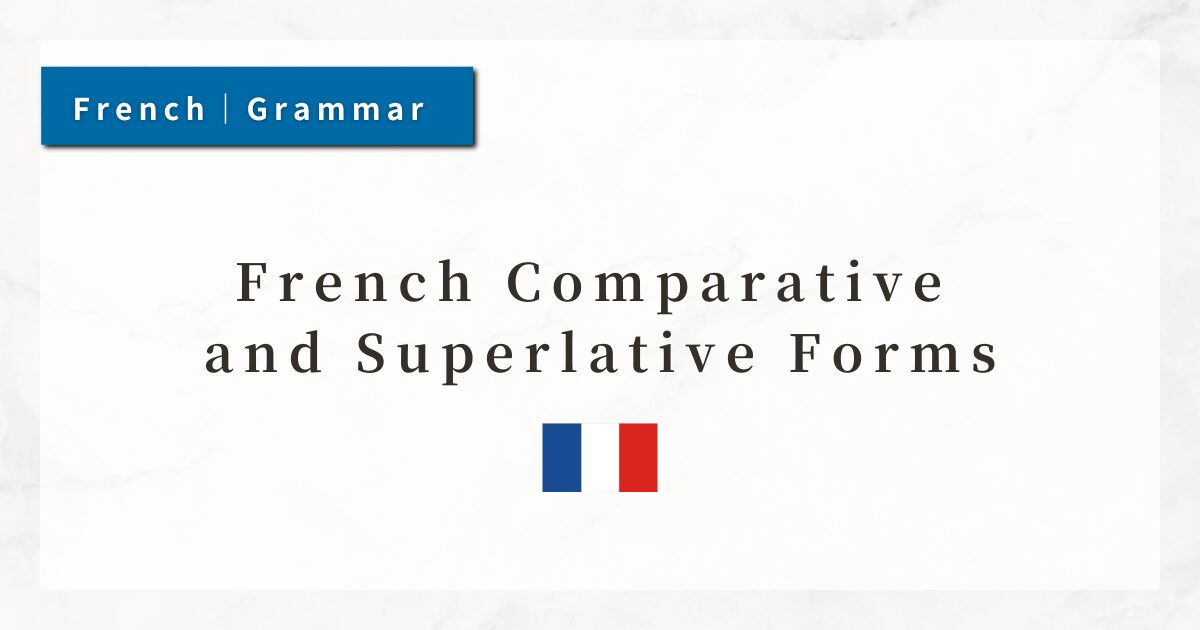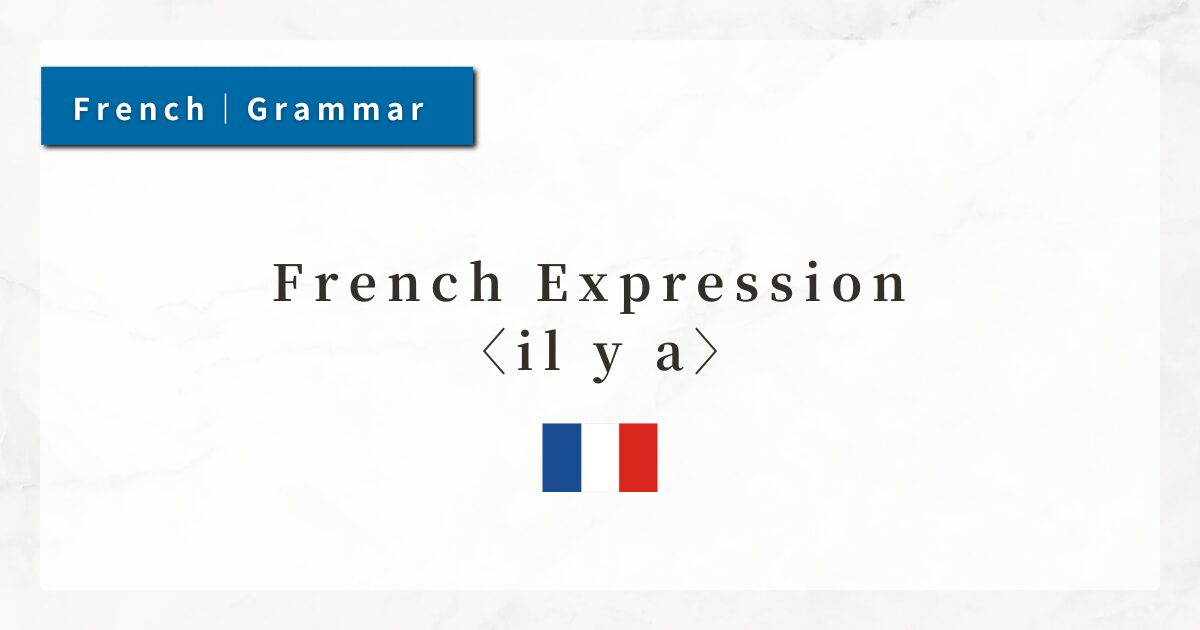#58 The Use of the Gérondif(Gerund)|Usage, Role, and Grammar Rules

In French, the gérondif expresses meanings such as “while doing” or “by doing,” and is used to add supplementary information about an action or situation.
It is similar in meaning to English expressions like by doing or while doing, but French has its own rules of usage and word order.
In this lesson, I will explain the structure and usage of the gérondif, as well as common verbs that frequently appear with it.
1. What Is the Gérondif?
The gérondif is formed with the preposition en followed by the present participle of a verb. The present participle is created by taking the stem of the nous form and adding -ant.
[Gérondif] en + present participle (-ant form)
| Verb (infinitive) | Gérondif form | Meaning in Japanese |
|---|---|---|
| parler (to speak) | en parlant | while speaking / by speaking |
| finir (to finish) | en finissant | while finishing / by finishing |
| aller (to go) | en allant | while going / by going |
The gérondif is used in an adverbial sense to express simultaneity, means, cause, or condition.
2. How to Use the Gérondif
2-1. Simultaneity: “while doing”
The most basic use of the gérondif is to express two actions happening at the same time.
- Elle cuisine en écoutant de la musique.
(She cooks while listening to music.)
Here, the subject “she” is performing both actions simultaneously: cooking and listening.
2-2. Means or Cause: “by doing”
The gérondif is also used when one action serves as the cause or means for another. It corresponds to English “by doing” or “through doing.”
- Il a réussi en travaillant dur.
(He succeeded by working hard.) - Elle a appris le français en vivant en France.
(She learned French by living in France.)
This usage is especially useful when explaining results based on effort or experience.
2-3. Condition or Hypothesis: “if …”
In some cases, the gérondif expresses a condition or hypothesis.
- En étudiant tous les jours, tu réussiras.
(If you study every day, you will succeed.) - En partant maintenant, on arrivera à l’heure.
(If we leave now, we will arrive on time.)
Here, the gérondif sets the condition for the action of the main clause.
3. The Difference Between the Gérondif and the Present Participle
Learners often confuse the gérondif (en + present participle) with the present participle (-ant form alone).
Although both forms end in -ant, their grammatical roles and meanings are different.
Gérondif (en + present participle) → modifies the verb
- Il est entré en chantant.
(He entered while singing.)
The action “singing” describes how the action “entering” is performed (adverbial function).
Present participle (alone) → modifies the noun
- Un homme chantant une chanson est entré.
(A man singing a song entered.)
Here, chantant une chanson modifies the noun un homme (adjectival/participial function).
Summary Table: Gérondif vs. Present Participle
| Item | Gérondif (en + present participle) | Present participle (alone) |
|---|---|---|
| Structure | en + present participle (e.g., en parlant) | present participle alone (e.g., parlant) |
| Grammatical role | Adverbial phrase (modifies verb) | Adjectival/participial phrase (modifies noun) |
| Usage | Expresses manner, means, condition | Describes noun with “-ing” idea |
| Meaning | “while doing,” “by doing,” etc. | “doing” / “that is doing” |
| Subject condition | Must have the same subject as the main clause | May have a different subject (context clarifies) |
4. Summary
- The gérondif has the form “en + present participle (-ant)” and expresses adverbial meanings such as “while doing” or “by doing.”
- The main uses are: (1) simultaneity, (2) means/cause, (3) condition/hypothesis.
- Present participles are formed from the “nous stem + -ant”; irregular verbs (être, avoir, savoir) have special forms.
- The subject of the gérondif must always be the same as the subject of the main clause.




